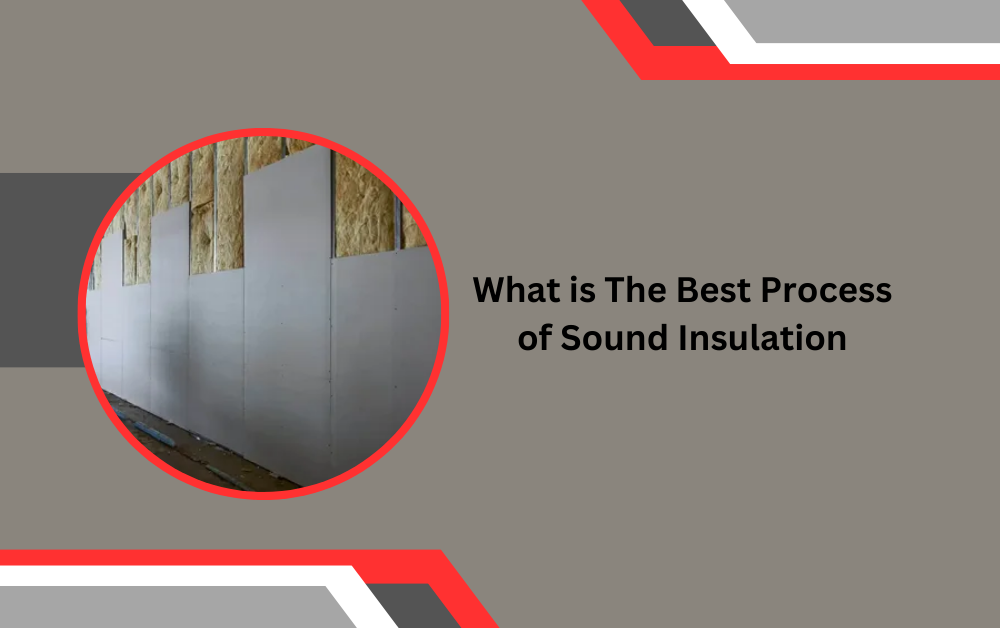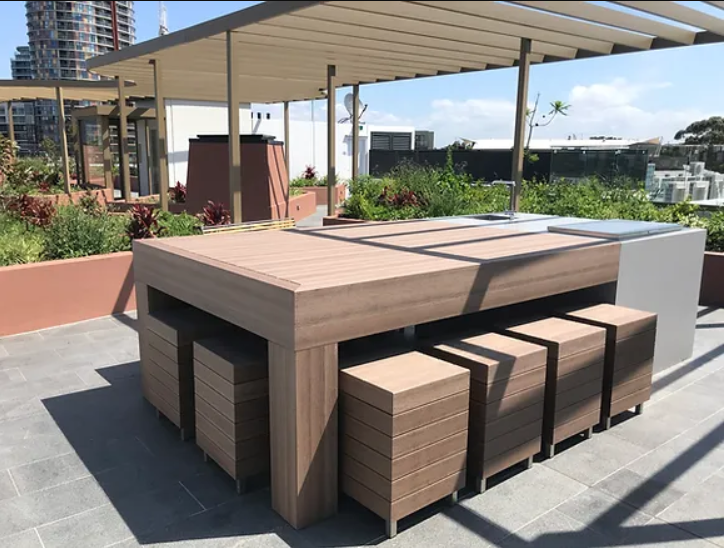
Introduction
Noise pollution is a common issue that disrupts our daily lives, affecting our comfort, productivity, and well-being. Whether it’s the sound of traffic, noisy neighbors, or a bustling office environment, unwanted noise can be a significant problem. Sound insulation is the solution to this problem, providing a way to reduce and control noise in any space. In this guide, we will explore the process of sound insulation, breaking it down into clear and actionable steps to help you achieve a quieter, more peaceful environment.
Introduction to Sound Insulation
Sound insulation involves the use of materials and techniques to prevent sound from entering or leaving a particular space. It’s not just about adding materials but understanding how sound travels and how to effectively block, absorb, and dampen it. The goal of sound insulation specialists is to create a barrier that minimizes the transmission of noise, providing a more comfortable and private space.
Understanding Sound Transmission
Sound travels in waves through the air, and when these waves encounter a barrier like a wall or floor, they can pass through, bounce back, or be absorbed. The effectiveness of sound insulation depends on how well the barrier can prevent the sound waves from passing through. This is achieved through three main principles: absorption, blocking, and damping.
Common Noise Sources
Identifying the sources of noise is the first step in the sound insulation process. Common sources include external noises like traffic and construction, as well as internal noises such as footsteps, voices, and machinery. Understanding where the noise is coming from helps in selecting the right materials and techniques to address the problem effectively.
Essential Materials for Sound Insulation
The choice of materials is crucial in the sound insulation process. Different materials have different properties that make them suitable for absorbing, blocking, or damping sound. Here are some of the most effective materials used in sound insulation.
Acoustic Panels
Acoustic panels are designed to absorb sound waves, reducing the amount of noise that reflects off walls and ceilings. They are commonly used in studios, offices, and home theaters to improve sound quality and reduce echo. Acoustic panels come in various shapes, sizes, and colors, making them a versatile option for any space.
Insulation Batts
Insulation batts, typically made from fiberglass or mineral wool, are placed between walls, floors, and ceilings to reduce sound transmission. They work by trapping air and reducing the transfer of sound waves. Insulation batts are an essential component of any sound insulation project, providing a cost-effective way to improve noise reduction.
Mass Loaded Vinyl (MLV)
Mass Loaded Vinyl is a dense, flexible material that provides excellent sound-blocking properties. It can be applied to walls, floors, and ceilings to create a barrier that prevents sound from passing through. MLV is particularly effective in blocking low-frequency sounds, making it ideal for use in home theaters and recording studios.
Soundproof Curtains
Soundproof curtains are heavy, thick drapes designed to block out noise. They are easy to install and can be used in conjunction with other soundproofing materials for enhanced effectiveness. Soundproof curtains are an excellent option for windows and doors, providing an additional layer of noise reduction.

Steps in the Sound Insulation Process
Sound insulation is a multi-step process that requires careful planning and execution. Here, we will outline the key steps involved in effectively insulating a space against unwanted noise.
Step 1: Assess the Noise Problem
The first step in the sound insulation process is to assess the noise problem. This involves identifying the sources of noise and determining the level of sound reduction needed. Conducting a thorough assessment helps in selecting the appropriate materials and techniques for the project.
Step 2: Choose the Right Materials
Based on the assessment, choose the materials that best suit your needs. Consider the type of noise, the frequency of the sound waves, and the specific areas that need insulation. Selecting the right materials is crucial for achieving effective sound insulation.
Step 3: Seal Gaps and Cracks
Small gaps and cracks can allow significant amounts of noise to pass through. Use acoustic sealant to fill in these gaps, paying special attention to areas around windows, doors, and electrical outlets. Sealing gaps and cracks is a simple yet effective way to improve the overall sound insulation of a space.
Step 4: Add Mass to Walls and Ceilings
Adding mass to walls and ceilings is an effective way to block sound. This can be done by adding extra layers of drywall or using materials like Mass Loaded Vinyl. The more mass you add, the harder it is for sound waves to penetrate the barrier.
Step 5: Install Acoustic Panels
Acoustic panels can be installed on walls and ceilings to absorb sound waves and reduce echo. Place the panels strategically to cover the most reflective surfaces in the room. Acoustic panels not only improve sound quality but also enhance the overall aesthetics of the space.
Step 6: Use Soundproof Doors and Windows
Standard doors and windows often allow a lot of noise to pass through. Replacing them with soundproof alternatives can make a significant difference. Soundproof doors and windows are designed with multiple layers of glass or other materials to provide superior sound blocking.
Step 7: Implement Advanced Techniques
For more comprehensive sound insulation, consider advanced techniques like building a room within a room or installing floating floors. These techniques require a higher level of expertise and may involve significant structural changes, but they provide exceptional results in terms of noise reduction.
Advanced Techniques in Sound Insulation
Advanced sound insulation techniques are used when basic methods are not sufficient to achieve the desired level of noise reduction. These techniques are typically used in professional settings like recording studios and theaters but can also be applied in residential and commercial spaces.
Building a Room Within a Room
The “room within a room” concept involves creating an isolated space within an existing room. This technique is commonly used in professional recording studios. By building separate walls, floors, and ceilings, you can create a completely isolated environment that minimizes sound transmission.
Installing Floating Floors
Floating floors are designed to absorb impact noise and prevent it from being transmitted through the structure of a building. This involves placing a layer of resilient material, such as rubber or cork, between the subfloor and the finished floor. This decouples the floor from the rest of the building, reducing noise transmission.
Using Soundproofing Compounds
Soundproofing compounds, such as Green Glue, can be applied between layers of drywall or other building materials to improve their sound-blocking properties. These compounds work by damping sound vibrations, making them less effective at transmitting noise.
Creating Acoustic Barriers
In addition to soundproofing the interior of a room, creating acoustic barriers outside can also be effective. This can involve building fences, walls, or hedges that block or deflect noise before it reaches the building.
Practical Tips for Successful Sound Insulation
Effective sound insulation requires careful planning, attention to detail, and the right materials and techniques. Here are some practical tips to help you achieve the best results.
Plan Thoroughly
Before starting any sound insulation project, create a detailed plan that outlines each step of the process. This includes selecting materials, measuring and cutting, and installing the materials correctly. A well-thought-out plan helps ensure a smooth and successful project.
Use High-Quality Materials
Invest in high-quality soundproofing materials to achieve the best results. While it may be tempting to cut costs, using inferior materials can compromise the effectiveness of your sound insulation efforts. High-quality materials provide better noise reduction and longer-lasting performance.
Pay Attention to Details
Small details can make a big difference in the effectiveness of sound insulation. Ensure that all gaps and cracks are sealed properly, and that materials are installed correctly. Pay attention to areas that are often overlooked, such as around electrical outlets and light fixtures.
Test and Adjust
After completing your sound insulation project, test its effectiveness by playing loud music or using a noise source outside the room. If you still hear noise, identify the areas where sound is leaking and make necessary adjustments. This may involve adding more materials or resealing gaps.
Common Mistakes to Avoid
Avoiding common mistakes can save you time, money, and frustration. Here are some pitfalls to watch out for when insulating your space against noise.
Ignoring Small Gaps
Small gaps and cracks can have a big impact on sound insulation. Make sure to thoroughly inspect and seal all potential openings, no matter how small they may seem.
Using Insufficient Materials
Using inadequate or insufficient materials can compromise the effectiveness of your sound insulation efforts. Invest in high-quality materials and use the recommended amounts to achieve the best results.
Overlooking Impact Noise
While airborne noise is often the primary focus, don’t overlook the importance of addressing impact noise. Techniques like installing floating floors and decoupling structures are essential for comprehensive sound insulation.
Rushing the Installation Process
Sound insulation requires patience and attention to detail. Rushing through the installation process can lead to mistakes and subpar results. Take your time and follow each step carefully to ensure a successful outcome.
Conclusion
Sound insulation is a vital process for creating a quieter, more comfortable living or working environment. By understanding the principles of sound transmission, selecting the right materials, and following a systematic approach, you can effectively reduce noise pollution. Whether you’re dealing with external noise from traffic or internal noise from footsteps and voices, sound insulation offers a practical solution to improve your quality of life. With careful planning, attention to detail, and a commitment to using high-quality materials, you can achieve exceptional results and enjoy the peace and quiet you deserve.
Note :- To Read More Articles Visit on- guestaus




